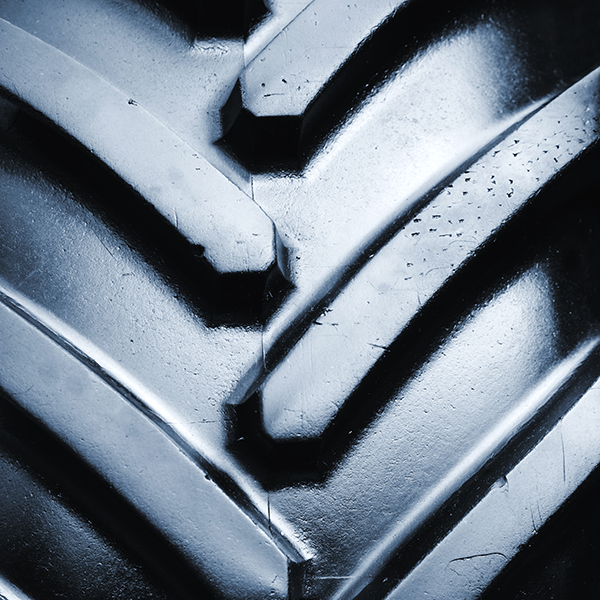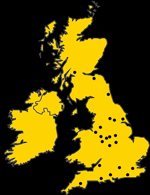Following on from our blog on the different parts of an OTR tyre, we’re doing a series on the science of how each element works. Working our way in from the outside, we’re starting with the tread.
Unlike some of the more technical parts of a tyre, we all know roughly what tread is and what it does. However, we’re going to investigate how it works, and how it is tailored to different uses.
Back to basics
Tread is the textured and uneven surface on the outside of a tyre. It is often made of rubber, but sometimes materials can vary, particularly in off-the-road (OTR) tyres. Tread exists to help vehicles grip the ground to roll forward and backwards without skidding or becoming stuck. Removing water and other fluids from a surface to maximise grip is another important job of the tread.
What is tread made of?
Most tread is made of rubber, which is flexible and has good grip without being too adhesive. The flexibility means that the tyre can run over bumps or flat surfaces while keeping a large surface area in contact with the ground. In slippery conditions, steel or composite chains or spikes may be added to the tread to increase grip.
How does tread work?
Tyre tread consists of raised rubber blocks with sunken channels called grooves between them. This arrangement works because the blocks press into depressions on the running surface, gaining traction, while the grooves allow bumps to press into the tyre. The flexibility of the rubber enables the tyre to mould itself to the surface, increasing traction further. The blocks are sometimes arranged in ribs to help the vehicle move forward at a consistent speed.
On Road and OTR tyre tread
The tread on many earthmovers and other OTR vehicles often consists of a sequence of large single blocks that cover the entire width of the tyre, or most of it. This allows the vehicle to gain the most traction possible on slippery off-road surfaces, while sacrificing consistent movement and stability at high speeds, which is rarely needed. Sipes, which are grooves which drain water from road tyres at high speed, are also absent from many earthmover tyres in order to maximise all-terrain durability.
Different treads for different roles
Most earthmovers and adverse terrain OTR vehicles have tyres with large, protrusive blocks to dig into soft surfaces for traction. Hard-surface OTR vehicles such as forklifts meanwhile have stable low-tread-profile tyres to keep them upright.
Share this post


